The end of the world may or may not come. That Mayan calendar thing turned out to be nothing, Y2K did not cause planes to fall from the sky. Television and tent revival preachers have been predicting the end of days for generations. It may be the second coming, a rogue comet hurtling toward Earth, nuclear annihilation, or any of many other options. Doomsday has long been a subject of some great, and several very bad, films. “Independance Day” has some great moments, but Earth defeats the aliens, so it’s not doomsday. “Testament” was a doomsday film, but it came out the same year as “The Day After.” Both movies have similar tone and story too. So, it does not make the list. “Hell Comes to Frogtown” has Rowdy Roddy Piper as the last fertile man, but it’s not the end of times.
David Duchovny starred in 1991’s “The Rapture,” which is about the Rapture, but Lord, is it ever a long watch. The 1950’s may have been the golden era for paranoia-based film making. “The Day Earth Stood Still,” “When Worlds Collide,” and “The War of the Worlds” all have merit, but the list can only be so long. Films covering the apocalypse have been around for more than a century. Here’s a bunch of my favorites.
Planet of the Apes (1968)

Rod Serling co-wrote the screenplay of a group of astronauts crashing onto a planet where humans are pre-lingual and apes sit atop the food chain. Charlton Heston is George Taylor, astronaut, human, rebel. After being taken captive and hauled into town, Heston revolts, defiantly snorts, “take your stinking paws off me, you damned dirty ape!” Then he escapes, falls in love with an ape woman, and discovers that all is not as it seems.
The image of Heston on the beach, wailing, “You Maniacs! You blew it up! Ah, damn you! God damn you all to Hell!” is one of the best pay-offs in the history of film.
Miracle Mile (1988)

Anthony Edwards is Harry, and he meets the girl of his dreams. Sadly, Harry meets her the day the world ends. Stepping out of an all-night diner, Harry picks up a ringing payphone. On the other end is a frantic soldier, trying to call his dad to warn him that the U.S. has launched missiles and nuclear war will break out in 70 minutes. In his panic, the soldier dialed the wrong area code. Shots ring out on the other end of the line, an official voice tells Harry to ignore the call and the clock begins ticking down.
Certain parts of this film have not aged well; the huge cellphone Denise Crosby uses, and the hideous suits of the era being just two. The action is mostly shot in real-time, giving tension and urgency to a low-budget film. The late Los Angeles night/early morning looks haunting and lovely. If you’ve seen”Cloverfield,” plenty of “Miracle Mile” will look familiar. Nearly 30 years later, the story, the pacing and the acting still hold up.
On the Beach (1959)

World War III laid waste to most of the planet. Director Stanley Kramer takes viewers on a horrific tour of a world where the Northern Hemisphere is contaminated with radiation, and survivors are heading to Australia in an effort to escape. More of an attempt to prolong the inevitable. Radiation dust is slowly making its way south and it is only a matter of time before the land down under is also doomed. The cast includes Gregory Peck, Ava Gardner, Anthony Perkins and Fred Astaire who add gravity to an already heavy subject.
Mars Attacks! (1996)
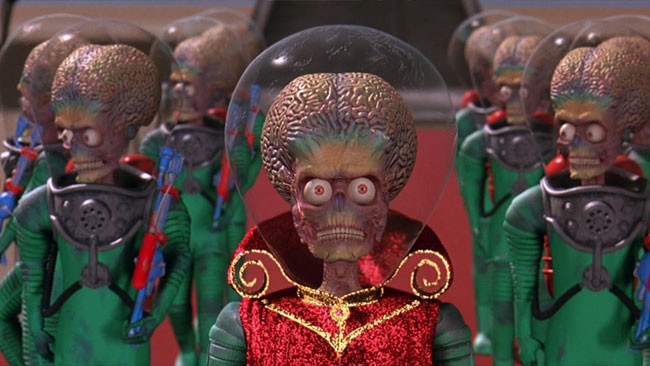
Slim Whitman saves the world. Sadly, the Nancy Reagan chandelier does not survive.
The End of the World (1916)

Directed by August Blom, 1916’s Danish entry “The End of the World” is the oldest film to feature a comet hitting the Earth and laying waste to our planet. Also known as “The Flaming Sword,” it was released on DVD in 2006 and has some inventive special effects (smoke, sparklers and shadows, mostly). The peasant uprising to take back what is theirs on their last night on Earth is well-acted and the print quality from the Danish Film Institute is crystal clear. At 77 minutes, there is plenty of time for Blom to build tension, and make you care about the characters.
Night of the Comet (1984)

For a brief period of time in the early 80’s, Catherine Mary Stewart was Hollywood’s next big thing. “Night of the Comet” (along with “The Last Starfighter”) put her face on the big screen, and then… superstardom avoided her. She has a productive career to this day, but playing Regina (or Reg) in “Night of the Comet” was, for me anyway, her best role.
A comet is approaching Earth for the first time in 65 million years, and everyone is thrilled to see it. Regina spends the night in the projection booth of the theater she works at. The next morning, the streets of L.A. are empty except for an angry, homeless guy. Reg beats him senseless and escapes on a motorcycle. It turns out, the guy wasn’t homeless, he was one of the unlucky humans exposed to the comet’s rays. Bad news is, those rays turn a person into a zombie. Until they vaporize.
Reg comes home to find her sister, Sam (played by Kelli Maroney), still alive — she slept in the tool shed after a fight with their “Step Monster.” The pair do what anyone would do in post-apocalyptic Southern California, they hit the mall. Reg and Sam meet up with a bunch of stockroom workers who are suffering from the ill-effects of the comet, or maybe they’re just complete jerks who survived. The pair are taken hostage when Willy (Ivan E. Roth) — the de facto leader of the stockroom gang — kills one of his own. The line, “I’m not crazy, I just don’t give a fuck,” ranks up with Maroney’s ad-libbed line after her machine pistol jams, “Dad would have gotten us Uzis” as the most memorable line of an under-appreciated film.
Stewart anchors the film as the smart, logical, center. The fact that she never got better roles, or more popular films, is a crime. The 80’s launched plenty of careers, sadly, Stewart’s was not one of the bigger ones. But, if you can find a better romantic/apocalypse/zombie/action/thriller, let me know. I’ll bring the beer.
Invasion of the Body Snatchers (1978)

Of the adaptations of “Invasion of the Body Snatchers,” 1978’s version is the best of the bunch. In the hands of Director Philip Kaufman, it is a quiet, moody re-imagining of Jack Finney’s novel, “Body Snatchers.”
San Francisco is slowly being assimilated by a plant-based invasion force from outer space. People are being replaced by identical-looking pods. It’s a cynical feeling story, much more dense and layered than the 1956 version.
Leonard Nimoy is solid, Donald Sutherland plays his role as if he were dead inside. I mean that as a compliment. As for trivia, Harry, the homeless banjo guy’s banjo playing was actually performed by Grateful Dead frontman Jerry Garcia.
28 Days Later (2002)
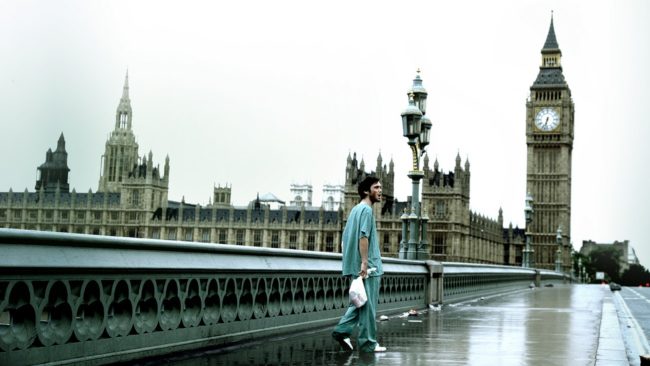
Danny Boyle’s 2002 alt-horror film “28 Days Later” introduced the rage virus to the film world. Animal rights activists break into a lab to fee the laboratory animals. To say it goes badly would be an understatement.
Upon breaking free, the lab animals go psychotic with rage, inflicting a majority of the population with a disease that turns normal British folks into rabid dogs who no longer think, just attack as part of a sprinting, screaming, mob. Blood, violence, a deserted major city and a healthy serving of dystopia fuel the action. The follow-up “28 Weeks Later” picked up where the original left off.
Dr. Strangelove (Or How I Learned to Stop Worrying and Love the Bomb) (1964)
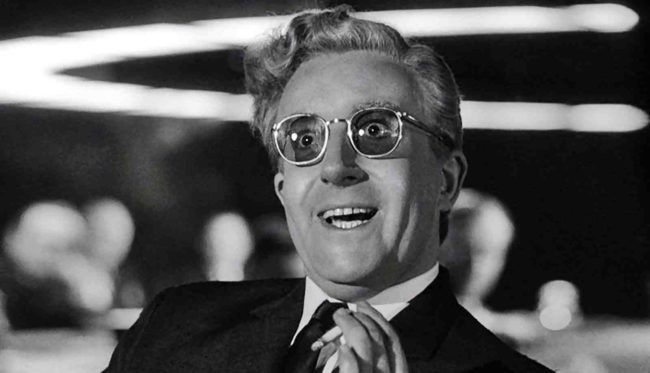
Stanley Kubrick’s black humor can’t get much blacker than the blackness of the end of the world. This is his Cold War masterpiece. “Dr. Strangelove” shows what happens when you couple a brilliant filmmaker with a scalding political satire and a clever script. Oddly enough, or maybe not, the nuclear war paranoia seems fresh as a daisy once again.
Peter Sellers stars as multiple characters, each more ludicrous than the other. The titular Dr. Strangelove is an ex-Nazi. Sellers plays him like madman convinced the rest of the world is crazy. There is also Sterling Hayden as Brigadier General Jack D. Ripper, a man oddly obsessed with his precious bodily fluids. I’m still not sure if Hayden’s portrayal is praising or indicting the military. George C. Scott is near flawless as General ‘Buck’ Turgidson. Best of the bunch is Slim Pickens as Major “King” Kong (yes, all of the names are moronic puns. I mean that in the best way possible.) Seeing him ride a bomb like a bucking bronco, ushering in the apocalypse, is at once terrifying and funny as Hell.
The Day After (1983)

Back in 1983, ABC scared the ever-loving Hell out of America by broadcasting “The Day After.” For a two-hour, made-for-TV movie, “The Day After” inspired massive amounts of calls to politicians and some blunt dialogue at high schools across the country.
The story unfolds in Lawrence, Kansas and Kansas City, Missouri and how the citizens find themselves in a harsh new reality and they’re forced to deal with the fallout, both nuclear and emotional.
Director Nicholas Meyer had a recent hit with “Star Trek 2: Wrath of Khan,” and he lobbied hard with the ABC censors to make the film as realistic as possible. For a frightened nation, “The Day After” was all too real. So real, children’s TV staple Mr. Rogers produced a series of shows to help the kids who were traumatized by the film. I always wondered what kind of parent would let a toddler watch such a stark, bleak, film. Of course, I would usually ask that question as I rocked one of my kids to sleep, watching episodes of “The X-Files,” so I may not be the go to person for parental advice.
Night of the Living Dead (1968)
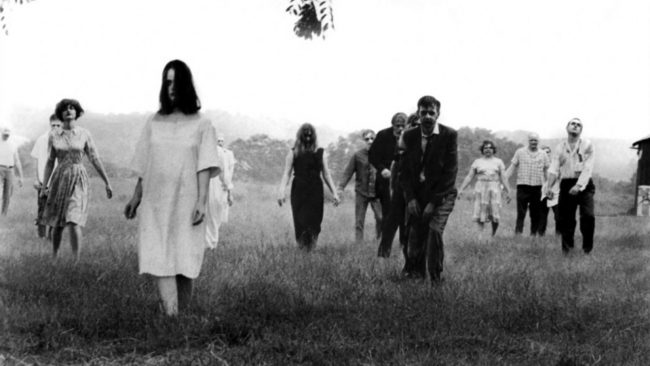
There were zombie films before “Night of the Living Dead.” There were films about Armageddon, too. George A. Romero put them together, threw on a healthy dose of paranoia and made a morality play about man’s inhumanity to man.
Barbra (Judith O’Dea) and Johnny visit their father’s grave in an extra creepy, remote cemetery to pay their respects. Zombies shamble up on the pair, who are shocked beyond belief. Things go very badly for Johnny, Barbra escapes to a farmhouse, where other refugees are seeking shelter from the chaos outside. Ben (Duane Jones) shows up looking for gasoline, and a group of people is discovered hiding in the basement.
The group is forced to work together with mixed, or catastrophic, results. The film works on multiple levels, even with a budget that must have been what producers could find in the sofa cushions. To date, it is still of the most successful independent movies ever made. Made for $114,000, it grossed approximately $30 million, more than 263 times its budget. It was also one of the first films to showcase an African American (Jones) in a main role; the role of the film’s moral center.
Mad Max (1979)
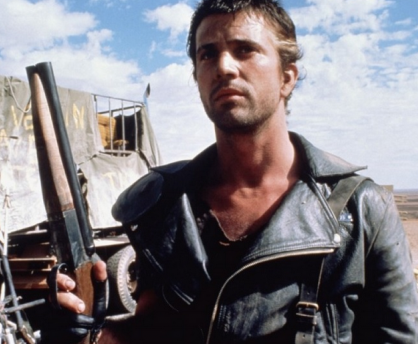
George Miller has made a career directing films that take place in a dystopian Australia. He’s carved out a style where the special effects take place inside the camera lens, not on some computer. There is always raw emotion mixed in with his coal-black view of the future. “Mad Max” is where it begins. “Mad Max” the title character is Mel Gibson, a highway patrolman cruising the endless back roads down under that are teeming with gangs of filthy criminals, who have been reduced to foraging for gasoline and whatever else they can steal. Max’s wife and child are killed in hideous, brutal ways by a soulless motorcycle gang. This sends Max out on a mission of vengeance across the barren wasteland.
Some versions have Gibson’s voice dubbed for American audiences by someone who was apparently trying to impersonate Dustin Hoffman’s Ratso Rizzo with limited success.
